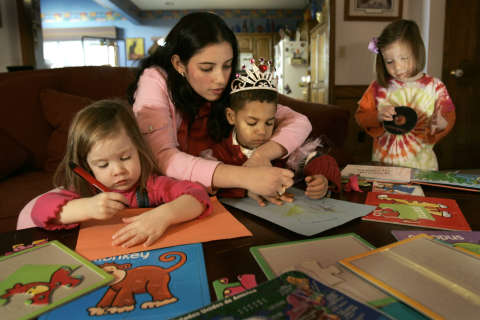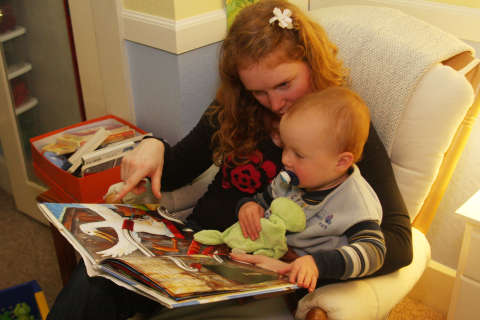Finding child care in the D.C. area is a struggle for many working parents — there are waitlists that stretch months and costs that exceed college tuition.
But for parents who work nontraditional hours — be it pre-dawn prep in a bakery, overnight shifts in a hospital, or dinner service at one of the city’s nationally recognized restaurants — securing quality child care is even more difficult.
According to a recent study from the social policy research organization Urban Institute, some 19,000 children ages 12 and under in the District have parents who work or commute outside the standard hours of 7 a.m. to 6 p.m., Monday through Friday. Currently, the city has 10,778 child care slots that offer care beyond these standard hours.
Heather Sandstrom, the lead author of the study, said 60% of D.C.’s 444 licensed child development facilities operate only during standard hours. Twenty-four centers offer 24-hour care and 34 operate more than 12 hours a day, but less than 24 hours.
“When we look at weekends, just seven centers and seven homes operate on Saturdays; six centers and five home-based providers are open on Sundays,” Sandstrom added.
A report from the Population Reference Bureau estimates two out of every five U.S. employees works nontraditional hours, and by 2020, occupations requiring nonstandard schedules are expected to see the most growth. According to Child Care Aware, 43 percent of all children under 18 in the U.S. have at least one parent who works nonstandard hours.
And while Sandstrom said jobs that require nontraditional hours have always existed, a number of national and local trends are fueling their growth.
“Many industries require some nontraditional-hour work, but the most common are retail, entertainment, hospitality and food service. So we’re talking about hotel staff, restaurant workers, store clerks, even casino personnel,” said Sandstrom, who added that health care is another common industry.
D.C.’s restaurant industry has grown substantially in the last decade. Recent statistics from the National Restaurant Association report food service in the city generates $4.4 billion and provides 65,200 jobs. Hotel development has also surged with the revitalization of neighborhoods, such as The Wharf, Union Market, City Center and Navy Yard.
The number of families with two full-time working parents has also increased, from 31% in 1970 to 46% in 2015, according to Pew Research Center.
Not all of the 19,050 D.C. children identified in the study as those who may need nontraditional-hour care do, in fact, need it. Sandstrom said many parents rely on help from friends, family and neighbors for child care. And increasing the number of available child care slots during nontraditional hours isn’t a quick and simple solution.
Sandstrom and her team surveyed caregivers for the study and found that, for many, the costs don’t make sense. Operating a facility beyond standard hours is expensive, and finding qualified staff willing to work early mornings, late nights or over night is challenging. Plus, it’s difficult to obtain licensing for overnight care, where children need dinner, baths and a safe place to sleep.
Still, as the city’s workforce continues to evolve and job descriptions require schedules beyond the typical 9-to-5, the demand for affordable, quality child care will continue to grow.
Read the full report on Urban Institute’s website.







